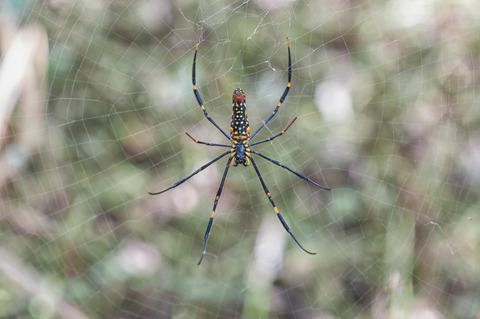当前位置:
X-MOL 学术
›
Funct. Ecol.
›
论文详情
Our official English website, www.x-mol.net, welcomes your
feedback! (Note: you will need to create a separate account there.)
High contrast yellow mosaic patterns are prey attractants for orb‐weaving spiders
Functional Ecology ( IF 4.6 ) Pub Date : 2020-02-11 , DOI: 10.1111/1365-2435.13532 Po Peng, Devi Stuart‐Fox, Szu‐Wei Chen, Eunice J. Tan, Guan‐Lin Kuo, Sean J. Blamires, I‐Min Tso, Mark A. Elgar
中文翻译:

高对比度的黄色马赛克图案是球形编织蜘蛛的猎物引诱剂
更新日期:2020-02-11
Functional Ecology ( IF 4.6 ) Pub Date : 2020-02-11 , DOI: 10.1111/1365-2435.13532 Po Peng, Devi Stuart‐Fox, Szu‐Wei Chen, Eunice J. Tan, Guan‐Lin Kuo, Sean J. Blamires, I‐Min Tso, Mark A. Elgar

|
- Many animals improve their foraging success by producing signals that exploit the sensory biases of potential prey, but the specific properties that make these sensory traps effective remain unclear.
- We combine field experiments with phylogenetic comparative analyses to investigate the visual luring properties of different signal designs in web‐building spiders. Our field experiments used cardboard spider models to examine the effects of area of colour patches, colour and pattern on the foraging success of the colourful giant wood spider, Nephila pilipes. These experiments revealed that both the colour (yellow) and pattern (yellow and black mosaic) are essential for luring prey in a high ambient light environment.
- We subsequently used phylogenetic comparative analyses to demonstrate an evolutionary association between prey viewing environment and spider ventral signal among 63 species of orb‐weavers from 53 genera.
- Combined, our data show that (a) the colour of the bright body parts of orb‐weavers is essential for both diurnal and nocturnal prey attraction, whereas the pattern and area of colour patches are important for diurnal foraging and (b) the evolution of these visual lures is associated with the viewing environment, specifically ambient light intensity.
- We conclude that the effectiveness of colour luring might be a major driver of the convergent evolution of yellow mosaic patterns in phylogenetically divergent orb‐weavers.
- Our discoveries indicate that prey colour preferences and signal efficacy play a significant role in the evolution of visually mediated prey‐luring systems.
中文翻译:

高对比度的黄色马赛克图案是球形编织蜘蛛的猎物引诱剂
- 许多动物通过产生利用潜在猎物的感官偏差的信号来提高其觅食的成功率,但使这些感官陷阱有效的具体特性仍不清楚。
- 我们将现场实验与系统发育比较分析相结合,以研究网络构建蜘蛛中不同信号设计的视觉吸引特性。我们的野外实验使用纸板蜘蛛模型来检查色块面积,颜色和图案对彩色巨型木蜘蛛Nephila pilipes觅食成功的影响。这些实验表明,颜色(黄色)和图案(黄色和黑色马赛克)对于在高环境光环境中吸引猎物都是必不可少的。
- 随后,我们使用系统发育比较分析证明了53个属的63种球织工中猎物观赏环境与蜘蛛腹侧信号之间的进化联系。
- 综合来看,我们的数据表明,(a)天体织布工的明亮身体部位的颜色对于昼夜捕食和夜间捕食都至关重要,而色斑的图案和面积对于昼夜觅食和(b)夜蛾的进化至关重要。这些视觉诱惑力与观看环境有关,特别是与环境光强度有关。
- 我们得出结论,颜色诱引的有效性可能是系统发生发散的天体织布工中黄色马赛克图案趋同演变的主要驱动力。
- 我们的发现表明,猎物的颜色偏好和信号功效在视觉介导的捕食者-诱饵系统的进化中起着重要作用。











































 京公网安备 11010802027423号
京公网安备 11010802027423号